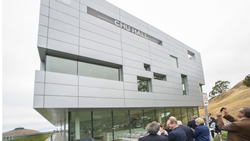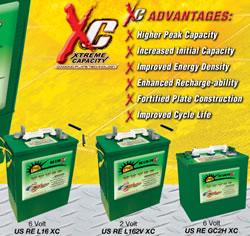Berkeley lab unveils new solar energy center aimed at producing fuel from sunlight
 Jeremy Thomas for Inside Bay Area News: In a christening hailed as a key moment in the effort to harness the sun's energy to create fuel, Lawrence Berkeley Lab officials on Tuesday unveiled a $59 million Solar Energy Research Center.
Jeremy Thomas for Inside Bay Area News: In a christening hailed as a key moment in the effort to harness the sun's energy to create fuel, Lawrence Berkeley Lab officials on Tuesday unveiled a $59 million Solar Energy Research Center.Named after former Energy Department Secretary and Lab Director Steven Chu, the 40,000-square-foot Chu Hall will be a place of world-changing research in producing cheaper, more efficient renewable energy to replace fossil fuels, said Chu, who was honored for inspiring the mission.
"This is one of the most important problems that science, technology and innovation really need to solve," Chu said. "It's a very big deal. ... We simply need to save the world, and it's going to be science that's going to be at the heart of that solution."
The facility will be home to the Berkeley hub of the Joint Center for Artificial Photosynthesis, a Department of Energy-funded collaboration led by the California Institute of Technology that is attempting to create solar fuel as plants do by using sunlight and other catalysts to split water into hydrogen and oxygen gas and convert carbon dioxide into liquid fuels such as methanol and ethanol. The byproduct of producing such a fuel would be oxygen.
Comments (0)
This post does not have any comments. Be the first to leave a comment below.
Featured Product

U.S. BATTERY RENEWABLE ENERGY SERIES DEEP CYCLE BATTERIES
Our RE Series batteries are designed to provide the highest peak capacity, longest cycle life, and greatest reliability for use in industrial or residential renewable energy applications. Renewable Energy Series batteries utilize the company's exclusive XC2™ formulation and Diamond Plate Technology® to create the industry's most efficient battery plates, delivering greater watt-hours per liter and watt-hours per kilogram than any other flooded lead-acid battery in the market. Our Deep Cycle batteries are engineered to work with solar panels as well as other renewable energy applications.
